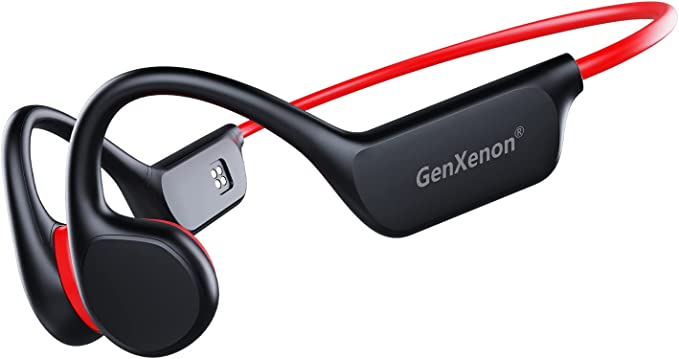The Sound of Safety: Aware-Listening Tech and Urban Survival
Update on Oct. 12, 2025, 6:11 p.m.
The siren was a ghost. A faint, ethereal wail that seemed to come from everywhere and nowhere at once. For the cyclist ahead of me, cocooned in the silent world of his noise-cancelling earbuds, it didn’t exist at all. As he glided into the intersection, the ambulance, now a physical and auditory reality, swerved violently to avoid him. A tragedy was averted by inches and the screech of tires. In the aftermath, the cyclist, having finally removed his earbuds, wore a look of pale, dawning horror. He hadn’t just been listening to music; he had been digitally deaf to the world.
This scene, replayed with countless variations on city streets every day, is not merely an anecdote about careless individuals. It is a symptom of a profound technological and social shift. For decades, our personal audio technology has been on a relentless quest for isolation. From the foam-covered headphones of the Walkman to the latest active noise-cancellation (ANC) marvels, the goal has been to create a perfect, private bubble of sound. We have successfully engineered tools that allow us to edit out the world. But in doing so, we are discovering that the world we edit out contains a critical data stream for our own survival.

The “Cocktail Party Effect” on a City Block
Our brains are not passive receivers of sound; they are astonishingly sophisticated filtering systems. Neuroscientists call it the “cocktail party effect”: the innate ability to focus on a single conversation in a noisy room while subconsciously monitoring the ambient soundscape for important cues—like someone calling your name from across the room. This is not a hearing function, but an attention and survival mechanism honed over millennia. Our ancestors needed to hear the snap of a twig over the rustle of leaves; we need to hear the distinct hum of an electric vehicle over the general din of traffic.
This natural, subconscious filtering is a dynamic process. It allows us to be both focused and aware. Active noise-cancellation technology, for all its brilliance, replaces this nuanced biological system with a digital sledgehammer. It creates a barrier, a deliberate sensory deprivation that, while blissful on a long flight, can be perilous on a short walk. It overrides our brain’s threat-detection system, telling it that the ambient world is no longer relevant. And our brains, trusting the input, comply.
The Data of Distraction
This growing disconnect is beginning to show up in public safety data. While it is difficult to isolate “headphone use” as a sole cause in accident reports, organizations like the World Health Organization (WHO) consistently point to pedestrian and cyclist “inattentiveness” as a major contributing factor in urban traffic incidents. A 2022 WHO report on road safety highlights that over 50% of all road traffic deaths are among vulnerable road users: pedestrians, cyclists, and motorcyclists. Every sound—the rev of a motorcycle, the back-up beep of a truck, the shout of another person—is a data point that informs our movement and keeps us safe. When we mute that data, we are navigating with an incomplete map of reality.
The rise of “silent” electric cars and scooters further complicates this auditory landscape. We can no longer rely on the familiar rumble of an internal combustion engine to announce a vehicle’s approach. Our ears, already our primary tool for detecting direction and motion, have become more critical than ever. The choice of what we place in or on them is no longer just a matter of lifestyle; it is a matter of public health.

Technology as a Corrective Lens
This is not a Luddite’s call to abandon personal audio. Instead, it is a call to choose a different kind of technology—one that works with our brain’s natural abilities, not against them. A new category of “aware-listening” technology, spearheaded by open-ear audio devices, is emerging as a direct response to this need.
Products like the Monster AC601 or the Bose Ultra Open, by their very design, reject the philosophy of isolation. They physically leave the ear canal unobstructed, allowing the full spectrum of environmental sound to be processed by our auditory system as intended. They function less like traditional headphones and more like a personal, transparent soundtrack to our lives. The music is an overlay, not a replacement. Users who praise these devices for their stability during exercise are not just talking about fit; they are implicitly praising the ability to hear a fellow runner approach from behind or a car horn on their route. This technology is not a feature; it is a worldview. It posits that connection, not isolation, is the ultimate goal.
Actionable Asset: The “Urban Auditory Risk Assessment” Checklist
While the hardware is evolving, the ultimate responsibility for awareness rests with the user. Your personal risk profile changes dramatically from a quiet park path to a bustling downtown intersection. Before you press play, take 30 seconds to assess your environment with this simple checklist.
Rate each factor from 1 (Very Low Risk) to 5 (Very High Risk) for your current situation:
- Traffic Density: (1: Quiet residential street, 5: Major multi-lane intersection)
- Vehicle Speed: (1: Walking-pace traffic, 5: High-speed arterial road)
- Prevalence of “Silent” Vehicles (EVs, bikes, scooters): (1: Rare, 5: Common)
- Complexity of Environment (e.g., construction, crowds, multiple entry points): (1: Simple, linear path, 5: Highly complex and unpredictable)
- Need for Social Interaction (e.g., ordering coffee, office environment): (1: None, 5: Constant)
Your Score: * 5-10 (Low Risk): A sealed, noise-cancelling earbud is likely safe to use. * 11-17 (Moderate Risk): Consider using the “transparency mode” on your ANC earbuds or lowering the volume significantly. * 18-25 (High Risk): This is an ideal scenario for an open-ear device. If unavailable, consider foregoing audio entirely. Your auditory attention is a critical safety tool in this environment.
This checklist isn’t about forbidding enjoyment; it’s about fostering a conscious, dynamic approach to personal safety.
Conclusion: A New Social Contract of Listening
The technology we wear shapes not only our personal experience but also our collective social fabric. The ubiquitous white earbuds of the early 2000s became a universal sign of “do not disturb.” Today, we have the opportunity to adopt technology that sends a different message: “I am present.”
Choosing an aware-listening device is a personal act with public consequences. It is a small nod to the unwritten social contract of sharing public space, an acknowledgment that we are all nodes in a complex, interconnected system. The future of urban survival may not depend on smarter cars or more intricate infrastructure alone, but on a more mindful, technologically-assisted way of listening to the world around us. The sound of safety is not silence; it is the rich, chaotic, and deeply informative symphony of the city itself, and it is imperative that we keep our ears open to hear it.




























